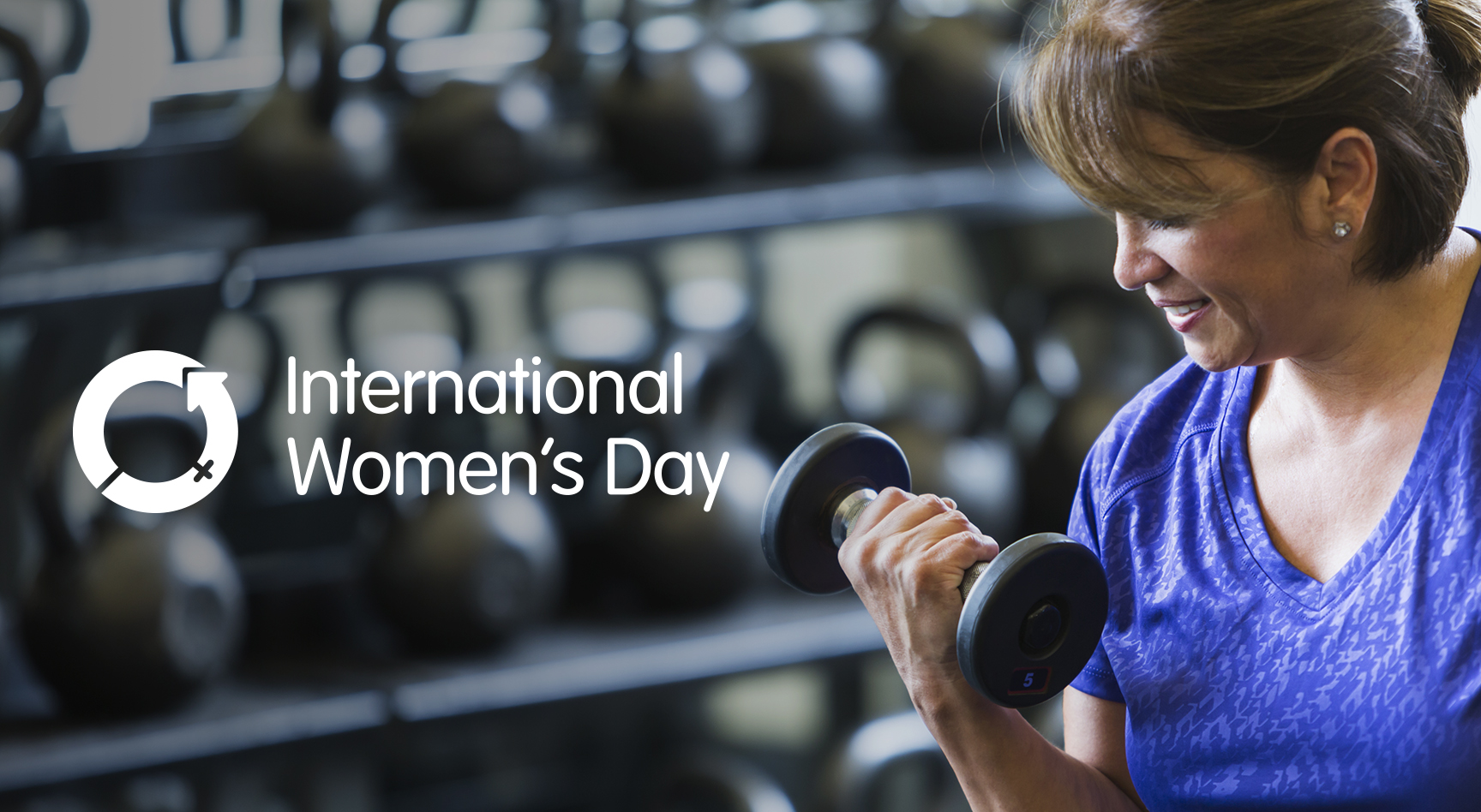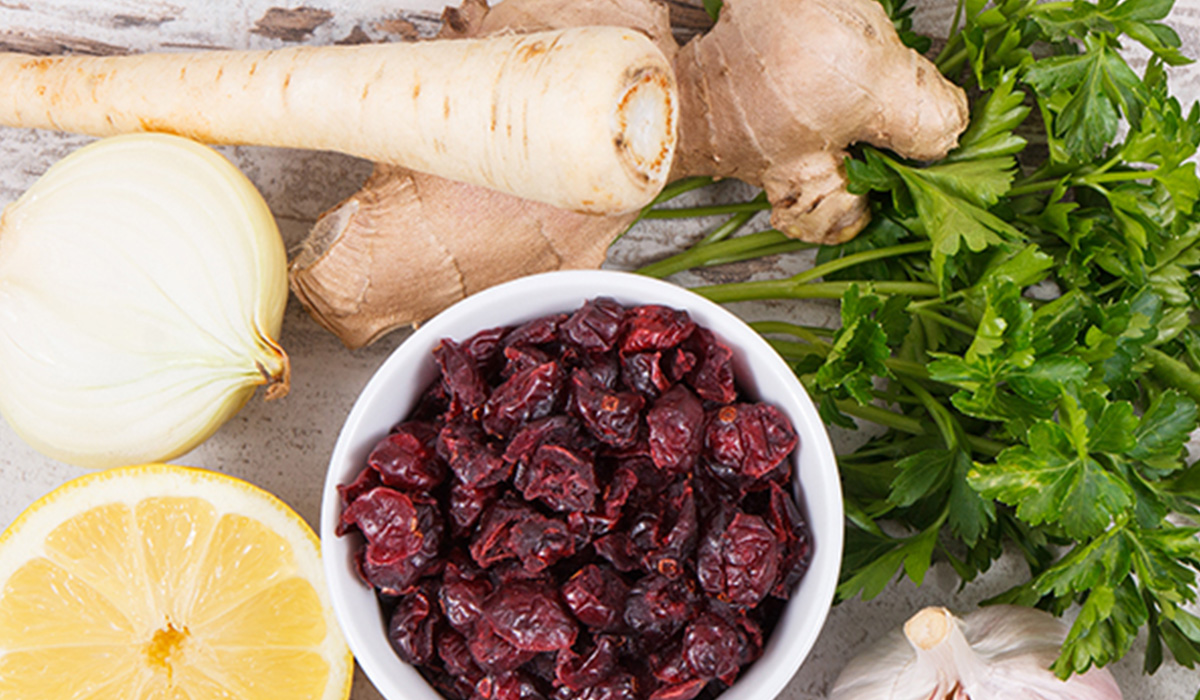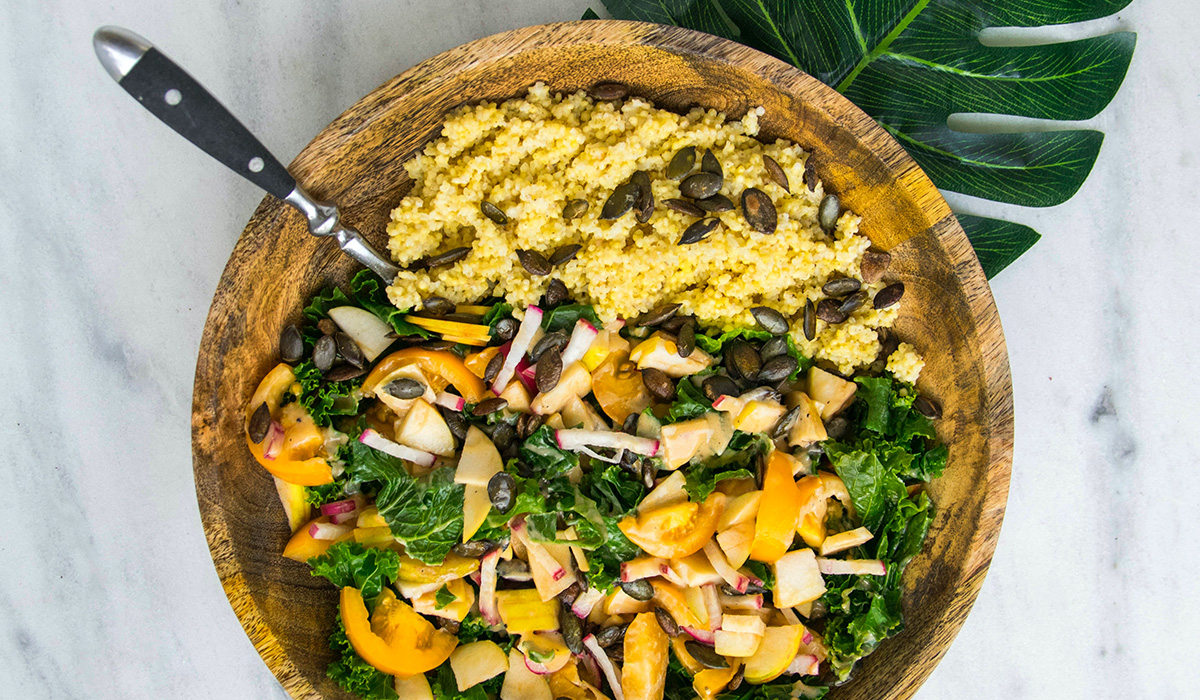WHAT IS A VEGAN DIET?
The vegan diet is an eating plan that eliminates all animal products, including meat, fish, eggs, dairy, and honey.
People decide to adopt veganism for different reasons, such as ethical concerns, health reasons or religious principles.
Others may decide to become vegan to improve the environment as plant-based diets are thought to generate fewer greenhouse gas emissions and use fewer natural resources noting that the environmental impact of any diet depends on multiple factors, including the way that foods are produced, packaged, and transported.
For those who decide to follow a vegan diet for health reasons, as veganism is associated with a multitude of benefits and may help prevent certain chronic diseases. Vegan diets have been shown to improve heart health, increase weight loss, and support blood sugar control.
DIFFERENT TYPES OF VEGAN DIETS
There are different varieties of vegan diets. The most common include:
- WHOLE-FOOD VEGAN DIET: A diet based on a wide variety of whole plant foods such as fruits, vegetables, whole grains, legumes, nuts, and seeds.
- RAW-FOOD VEGAN DIET: A vegan diet based on raw fruits, vegetables, nuts, seeds, or plant foods cooked at temperatures below 118°F (48°C).
- 80/10/10: The 80/10/10 diet is a raw-food vegan diet that limits fat-rich plants such as nuts and avocados and relies mainly on raw fruits and soft
greens instead. Also referred to as the low-fat, raw-food vegan diet or fruitarian diet.
- THE STARCH SOLUTION: A low-fat, high-carb vegan diet like the 80/10/10 but that focuses on cooked starches like potatoes, rice, and corn instead of fruit.
- RAW TILL 4: A low-fat vegan diet inspired by the 80/10/10 and starch solution. Raw foods are consumed until 4 p.m., with the option of a cooked plant-based meal for dinner.
- THE THRIVE DIET: The thrive diet is a raw-food vegan diet. Followers eat plant-based, whole foods that are raw or minimally cooked at low temperatures.
- JUNK-FOOD VEGAN DIET: A vegan diet lacking in whole plant foods that relies heavily on mock meats and cheeses, fries, vegan desserts, and other heavily processed vegan foods.
Although several variations of the vegan diet exist, most scientific research rarely differentiates between these different types of vegan diets.
HEALTH BENEFITS OF VEGANISM
VEGAN DIETS CAN HELP YOU LOSE WEIGHT
Vegans tend to be thinner and have a lower body mass index (BMI) than non-vegans. This might explain why an increasing number of people turn to vegan diets to lose excess weight. Part of the weight-related benefits vegans experience may be explained by factors other than diet. These may include healthier lifestyle choices, such as physical activity, and other health-related behaviours.
VEGAN DIETS, BLOOD SUGAR AND TYPE 2 DIABETES
Adopting a vegan diet may help keep your blood sugar in check and type 2 diabetes at bay.
Several studies show that vegans benefit from lower blood sugar levels, higher insulin sensitivity and up to a 78% lower risk of developing type 2 diabetes than non-vegans. Part of the advantage could be explained by the higher fibre intake, which may blunt the blood sugar response. A vegan diet’s weight loss effects may further contribute to its ability to lower blood sugar levels.
A VEGAN DIET MAY HELP KEEP YOUR HEART HEALTHY
Observational studies report vegans may have up to a 75% lower risk of developing high blood pressure and 42% lower risk of dying from heart disease. These effects could be especially beneficial since reducing blood pressure, cholesterol and blood sugar may reduce heart disease risk by up to 46%.
OTHER HEALTH BENEFITS OF VEGAN DIETS
Vegan diets are linked to an array of other health benefits, including:
- CANCER RISK: Vegans may benefit from a 15% lower risk of developing or dying from cancer.
- ARTHRITIS: Vegan diets seem particularly effective at reducing symptoms of arthritis such as pain, joint swelling, and morning stiffness.
- KIDNEY FUNCTION: Diabetics who substitute meat for plant protein may reduce their risk of poor kidney function.
- ALZHEIMER’S DISEASE: Observational studies show that aspects of the vegan diet may help reduce the risk of developing Alzheimer’s disease.
A VEGAN SHOPPING LIST
A healthy vegan diet should contain a variety of whole grains, proteins, healthy fats, and fruits and vegetables.
Foods like nuts, seeds, legumes, soy products, and nutritional yeast can all help boost your protein intake throughout the day.
Meanwhile, avocado oil, coconut oil, and olive oil are nutritious, vegan-friendly choices for healthy fats.
Here is a sample vegan shopping list to help get you started:
FRESH PRODUCE
- VEGETABLES: asparagus, bell peppers, broccoli, cabbage, carrots, cauliflower, garlic, kale, onions, potatoes, spinach, tomatoes, zucchini, etc.
- FRUITS: apples, bananas, blueberries, grapes, grapefruit, lemons, limes, kiwis, oranges, peaches, pears, pomegranates, strawberries, etc.
FROZEN PRODUCE
- VEGETABLES: broccoli, Brussels sprouts, butternut squash, carrots, cauliflower, corn, green beans, peas, vegetable medley, etc.
- FRUITS: blackberries, blueberries, cherries, mangoes, pineapples, raspberries, strawberries, etc.
WHOLE GRAINS
Barley, brown rice, buckwheat, bulgur, farro, oats, quinoa, sorghum, teff.
BREADS AND PASTAS
Brown rice and pasta, Whole-wheat pasta, sprouted bread such as Ezekiel bread, brown rice wraps.
PROTEIN SOURCES
- NUTS: almonds, Brazil nuts, cashews, hazelnuts, macadamia nuts, peanuts, pecans, pistachios, walnuts, etc.
- SEEDS: chia seeds, flax seeds, hemp seeds, pumpkin seeds, sesame seeds, sunflower seeds, etc.
- LEGUMES: black beans, chickpeas, kidney beans, lentils, navy beans, pinto beans, etc.
- SOY PRODUCTS: tempeh, tofu, etc.
- PROTEIN POWDERS: pea protein powder, brown rice protein, hemp protein, etc.
DAIRY ALTERNATIVES
- MILK SUBSTITUTES: almond, cashew, coconut, flax, oat, rice, and soy milks, etc.
- YOGURT SUBSTITUTES: almond, cashew, coconut, flax, and soy yogurts, etc.
- VEGAN CHEESE: vegan parmesan cheese, shredded and sliced varieties, etc.
EGG ALTERNATIVES
Aquafaba, arrowroot powder, chia seeds, corn-starch, flax meal, pre-packaged vegan egg substitute, silken tofu.
HEALTHY FATS
Avocados, avocado oil, coconut oil, flax oil, olive oil, unsweetened coconut, tahini.
SNACKS
- Edamame
- Dark chocolate
- Dried fruit
- Fruit leather
- Hummus
- Nut butter
- Pita chips
- Popcorn
- Roasted chickpeas
- Seaweed crisps
- Trail mix
SWEETENER
- Coconut sugar
- Dates
- Maple syrup
- Molasses
- Monk fruit
- Stevia
SPICES AND CONDIMENTS
- Cayenne pepper
- Chili powder
- Cinnamon
- Cumin
- Garlic powder
- Ground ginger
- Nutritional yeast
- Paprika
- Pepper
- Rosemary
- Thyme
- Turmeric
Note that many processed vegan products found at the store — such as vegan meat substitutes — are often loaded with sodium, fillers, additives, and other ingredients that may harm your health.
Try to stick to mostly whole, unprocessed foods — and steer clear of mock meats and other highly processed vegan ingredients and premade meals.
SAMPLE MEAL PLAN
Here is a sample one-week meal plan that features a few of the nutritious foods that can be enjoyed on a vegan diet:
MONDAY
BREAKFAST: tempeh bacon with sautéed mushrooms, avocado, and wilted arugula.
LUNCH: whole-grain pasta with lentil “meatballs” and a side salad.
DINNER: cauliflower and chickpea tacos with guacamole and Pico de Gallo.
SNACKS: air-popped popcorn, kale chips, and trail mix.
TUESDAY
BREAKFAST: coconut yogurt with berries, walnuts, and chia seeds.
LUNCH: baked tofu with sautéed red cabbage, Brussels sprouts, and herbed couscous.
DINNER: mushroom lentil loaf with garlic cauliflower and Italian green beans.
SNACKS: bell peppers with guacamole, fruit leather, and seaweed crisps.
WEDNESDAY
BREAKFAST: sweet potato toast topped with peanut butter and banana.
LUNCH: tempeh taco salad with quinoa, avocados, tomatoes, onions, beans, and cilantro.
DINNER: oat risotto with Swiss chard, mushrooms, and butternut squash.
SNACKS: mixed berries, vegan protein shake, and walnuts.
THURSDAY
BREAKFAST: eggless quiche with silken tofu, broccoli, tomatoes, and spinach.
LUNCH: chickpea and spinach curry with brown rice.
DINNER: Mediterranean lentil salad with cucumbers, olives, peppers, sun-dried tomatoes, kale, and parsley.
SNACKS: roasted edamame, sliced pear, and energy balls made from oats, chia seeds, nut butter, and dried fruit.
FRIDAY
BREAKFAST: overnight oats with apple slices, pumpkin seeds, cinnamon, and nut butter.
LUNCH: black bean veggie burger with steamed broccoli and sweet potato wedges.
DINNER: mac and “cheese” with nutritional yeast and collard greens.
SNACKS: pistachios, homemade granola, and coconut chia pudding.
SATURDAY
BREAKFAST: breakfast skillet with tempeh, broccoli, kale, tomatoes, and zucchini.
LUNCH: garlic-ginger tofu with stir-fried veggies and quinoa.
DINNER: bean salad with black-eyed peas, tomatoes, corn, bell peppers, and onions.
SNACKS: roasted pumpkin seeds, frozen grapes, and celery with almond butter.
SUNDAY
BREAKFAST: whole-grain toast with avocado and nutritional yeast alongside a vegan protein shake.
LUNCH: lentil chili with grilled asparagus and baked potato.
DINNER: vegetable paella with brown rice, onions, tomatoes, bell peppers, artichoke, and chickpeas.
SNACKS: almonds, fruit salad, and carrots with hummus.
POTENTIAL DOWNSIDES AND PRECAUTIONS
Although a well-rounded vegan diet can be healthy and nutritious, a vegan diet that is not properly planned can harm your health.
NUTRITIONAL DEFICIENCIES
Vegan diets may be associated with an increased risk of several nutritional deficiencies. This is because meat, fish, and poultry are rich in several important nutrients that are mostly lacking in plant-based foods, including protein, iron, zinc, vitamin B12, phosphorus, and omega-3 fatty acids.
Animal products like eggs and dairy are also high in protein and micronutrients like calcium, potassium, phosphorus, iodine, iron, and magnesium. Completely cutting these foods out of your diet can increase your risk of nutritional deficiencies.
Vegans may be at a higher risk of deficiency for vitamin B12, vitamin D, calcium, iodine, iron, and protein.
This can lead to an increased risk of issues like anaemia, weakened bones, and impaired immunity.
Low levels of vitamin B12 can be especially concerning during pregnancy, as a deficiency could potentially increase the risk of neural tube defects and impair your baby’s brain and nervous system.
Including a variety of nutrient-rich ingredients and fortified foods in your diet is necessary to ensure you’re meeting your nutritional needs. Vitamin B12 and vitamin D can be found in fortified foods, such as plant-based milks, cereals, and nutritional yeast.
Meanwhile, protein, zinc, and iron are found in legumes, soy products, nuts, and seeds. Including moderate amounts of iodized salt in your diet can also help you meet your needs for iodine.
SUPPLEMENTS
It can be challenging to meet your nutritional needs while following a vegan diet. Certain nutrients like vitamin B12, vitamin D, and iodine, are found primarily in animal products and certain fortified foods. Plus, while non-heme iron occurs in a variety of plant foods, it may not be as well absorbed as the heme iron found in animal products.
SUPPLEMENTS TO CONSIDER
Some vegans may find it difficult to eat enough of the nutrient-rich or fortified foods above to meet their daily requirements. In this case, the following supplements can be particularly beneficial:
- VITAMIN B12: Vitamin B12 in cyanocobalamin form is the most studied and seems to work well for most people
- VITAMIN D: Opt for D2 or vegan D3 forms
- EPA AND DHA: Sourced from algae oil
- IRON: Should only be supplemented in the case of a documented deficiency. Ingesting too much iron from supplements can cause health complications and prevent the absorption of other nutrients
- IODINE: Take a supplement or add 1/2 teaspoon of iodized salt to your diet daily
- CALCIUM: Calcium is best absorbed when taken in doses of 500mg or less at a time. Taking calcium at the same time as iron or zinc supplements may reduce their absorption
- ZINC: Taken in zinc gluconate or zinc citrate forms. Not to be taken at the same time as calcium supplements
THE BOTTOM LINE
Balanced vegan diets are healthy, nutritious, and associated with a variety of health benefits, including improved heart health, blood sugar, and body mass. Following a vegan meal plan can help you incorporate many nutrient-rich, whole foods into your diet to provide your body with the nutrients it needs. Keep in mind that supplements and proper planning are essential to avoid deficiencies in several critical nutrients.




